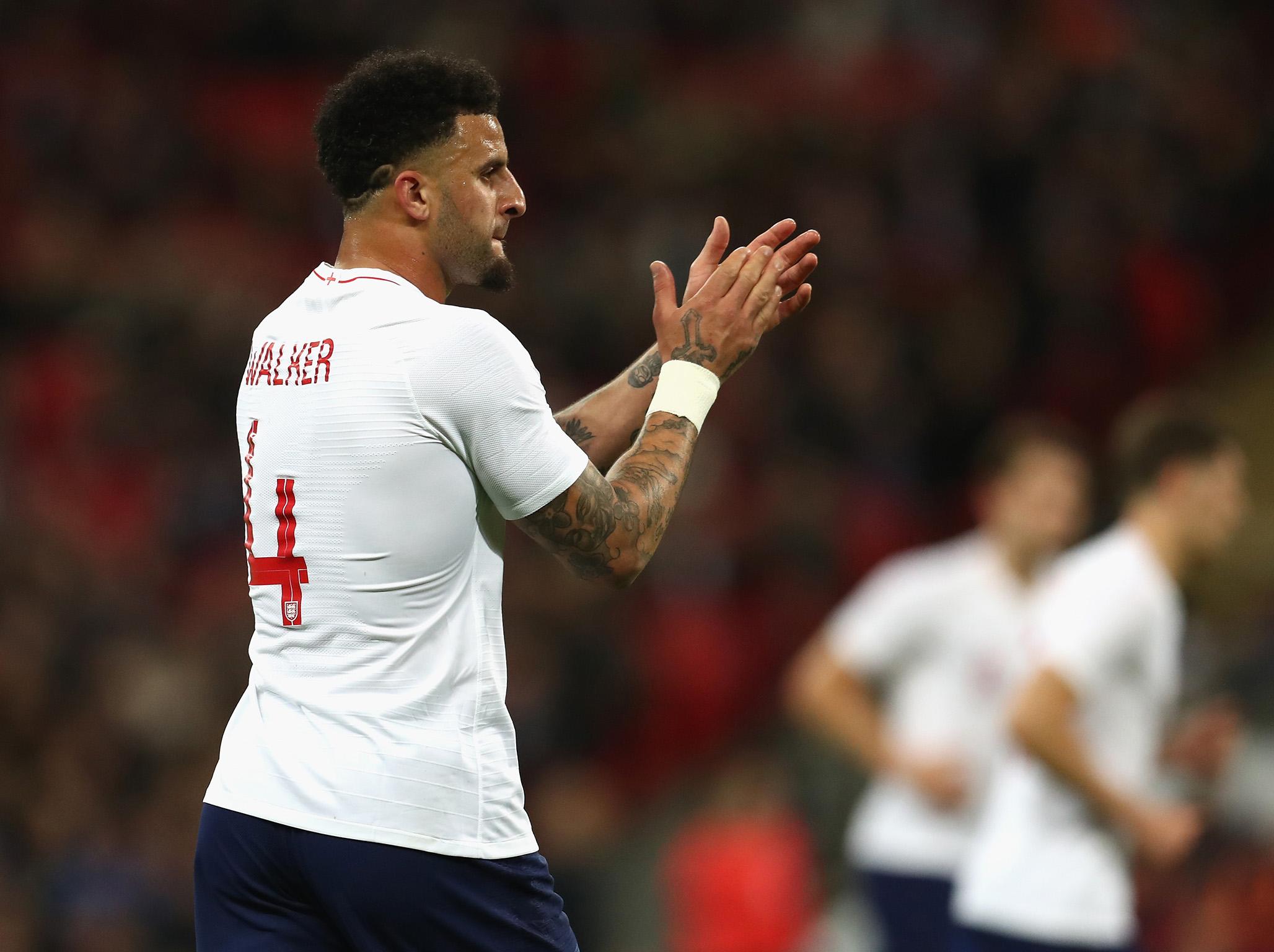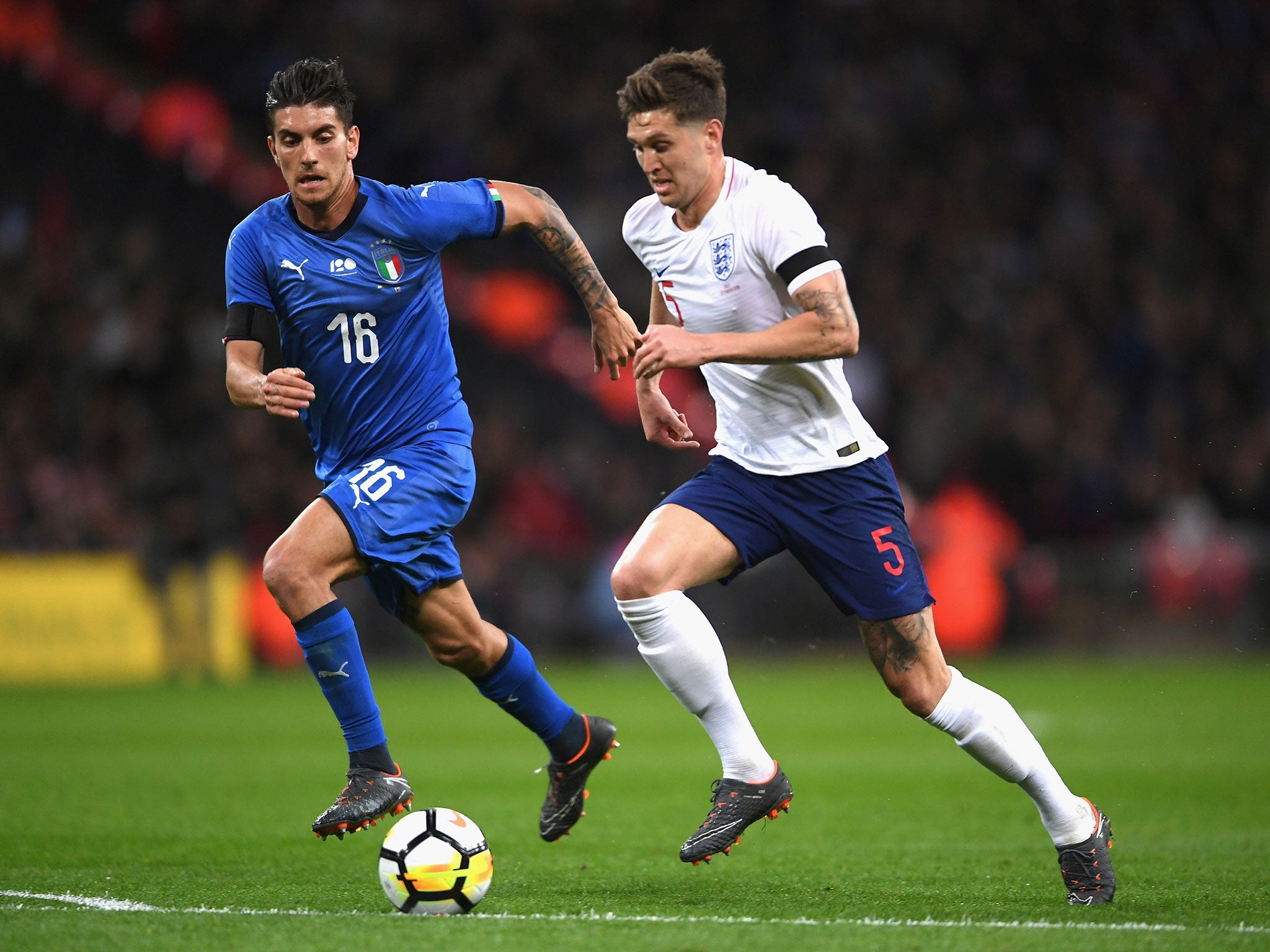Gareth Southgate’s innovative ploy to use Kyle Walker in England’s back three seems to be working
Walker’s presence in that space gave Kieran Trippier the freedom to get forward

Your support helps us to tell the story
From reproductive rights to climate change to Big Tech, The Independent is on the ground when the story is developing. Whether it's investigating the financials of Elon Musk's pro-Trump PAC or producing our latest documentary, 'The A Word', which shines a light on the American women fighting for reproductive rights, we know how important it is to parse out the facts from the messaging.
At such a critical moment in US history, we need reporters on the ground. Your donation allows us to keep sending journalists to speak to both sides of the story.
The Independent is trusted by Americans across the entire political spectrum. And unlike many other quality news outlets, we choose not to lock Americans out of our reporting and analysis with paywalls. We believe quality journalism should be available to everyone, paid for by those who can afford it.
Your support makes all the difference.If there was one moment that summed up why Gareth Southgate was clever to move Kyle Walker to the right of his back three, it came six minutes into the second half here at Wembley. Lorenzo Insigne was racing away down the left, chasing a ball hopefully knocked into the space in behind Kieran Trippier.
Insigne is a high-speed scurrier and he had a good 10-metre head start on Walker, whose job it was to guard that space. But even then, Walker was quick enough, rushing through the gears to catch up with Insigne, nudge him legally out of play and take the throw in he had won.
That, in a few seconds of football, is why you convert a full-back to play on the side of a back three. Because that role is a hybrid one, demanding more than it takes to play as one of two centre-backs. You have to be able to defend the wide areas, beyond the width of the penalty box, when your wing back is pushed high up the pitch. You have to be able to defend one against one, often against a dangerous attacker with the ball at his feet. You have to be quick, as well as everything else, able to defend where more natural centre-backs are not.
Pace, more than anything else, explains which centre-backs are good at defending those wide areas and which look slightly out of place. Why Toby Alderweireld made a better switch to that role than, say, Nicolas Otamendi.
This is what Gareth Southgate has spotted, and how he explained his decision in his press conference at Tottenham’s training ground on Monday afternoon. “If you are playing on the side of a three, it’s the ability to defend the wide areas, and use the ball comfortably, in areas he is used to,” Southgate explained. “His athleticism, not only to defend big spaces, and cover the rest of the defence, but also his ability to drive out.”
So Walker’s presence in that space gave Kieran Trippier the freedom to get forward, as Walker cut out all of Italy’s attempts to get down his side, whether from Insigne’s runs or the threaded passes of Jorginho.

It was John Stones and James Tarkowski, the two specialist centre-backs, who in fact looked more vulnerable. Stones was unusually clumsy on the ball in the first half, robbed by Ciro Immobile, before losing the Lazio man who should have done better with a free header in the box soon after. Tarkowski started well on England debut, but he gave away the penalty from which Italy equalised, tripping Federico Chiesa in the box with five minutes left.
If there was one frustration for Walker – who won man of the match for his performance – it was that he did not get forward as much as we are used to seeing. Southgate wanted to see him drive out with the ball, and while there were some good passes, including one rocketed diagonal to Ashley Young, there were none of the runs to the byline that characterise his play for Manchester City. But then football management is about trade-offs, and Walker had Trippier and Alex Oxlade-Chamberlain charging forward in front of him.
So England maintained their threat down the right wing while losing none of their stability at the back. They played with an aggressive right wing back while not exposing themselves in the space left behind him. And they did so by using a player in a role that was not even wholly unfamiliar for him: Walker played centre-back at times for Sheffield United as a youngster. He even played in exactly this role – the right of the back three in a 3-4-3 – when Manchester City went to Stamford Bridge and wiped the floor with Chelsea back in September. And, depending on what direction his career goes, he has the capacity to play there long into his 30s too.
For years we have asked for an English manager prepared to find brave, imaginative solutions, rather than just sticking the same old pegs in the same old holes and hoping for the best. Now Southgate and Walker have given it to us, and, two games in, it looks like it works.
Join our commenting forum
Join thought-provoking conversations, follow other Independent readers and see their replies
Comments